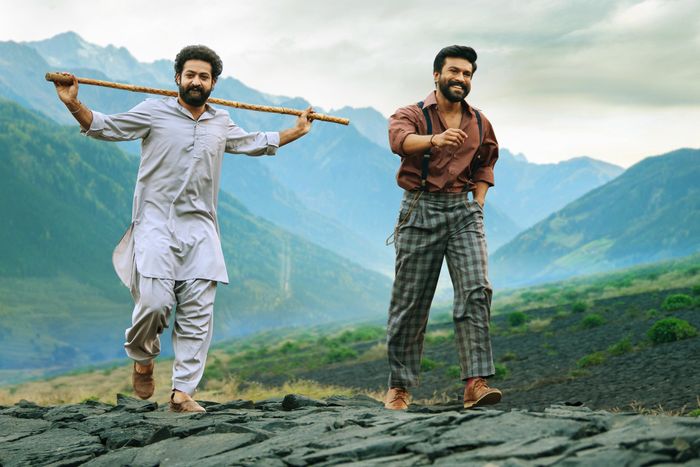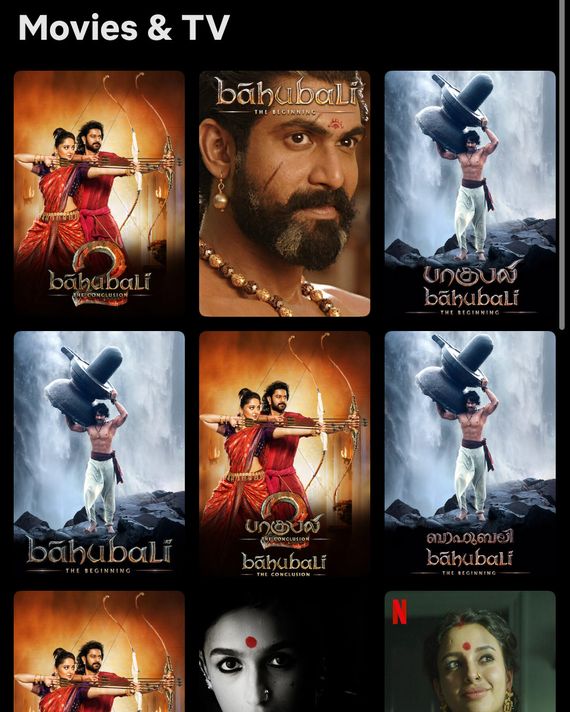
S. S. Rajamouli’s RRR, a raucous theatrical experience set in 1920s colonial India, began its short but explosive run in American cinemas on March 24, raking in about $15 million in the U.S. — something few Indian films can boast. Less than two months after its release, the Tollywood musical epic is now streaming. The movie lands today on Netflix, but it’s only available dubbed in Hindi (with multiple subtitle-language options). If you want to watch it in its original language, Telugu, you’ll need a subscription to ZEE5, a relatively new Indian streaming service that has stepped in to claim one of the year’s most sought-after international releases. (If you want an English dub, you’re out of luck on either service for now.)
RRR’s streaming release strategy has been curious all around. Plans for the digital debut were changing up to the last minute — with its scheduled June 2 Netflix release moved up nearly two weeks to yesterday with just a few hours’ notice; there have been inconsistencies in its ZEE5 rollout as well. When the film leaked online in May, fans wondered how the leak would affect its online release, but when reached for comment, reps at ZEE5 simply responded with: “……….”
Now that it is available, for those looking to watch RRR in Telugu or dubbed in Tamil, Kannada, or Malayalam, a ZEE5 subscription will run you $49.99 annually (or $20.99 for three months). Netflix doesn’t offer the film in those languages, making this the latest instance of a sometimes confusing release pattern for streaming Indian films — in both the U.S. and India. When expensive licensing agreements are struck for international distribution, major blockbusters can ultimately land on different platforms in different languages. Rajamouli’s previous films Baahubali: The Beginning and Baahubali 2: The Conclusion are available on Netflix, but rather than each appearing as a single asset with the option to toggle between languages — like, say, the Korean hit series Squid Game — there’s a different entry for each film depending on the dub in question, and they don’t always line up across the franchise. Netflix has the first Baahubali in Tamil (one of the two spoken languages in which it was shot) and dubbed in Hindi, Malayalam, English, Spanish, and Portuguese, while the second film is available only in Tamil, Hindi, and Malayalam — no European-language versions. To complicate matters further, neither movie is available to stream in Telugu, their other spoken language.
It’s a headache, but for films like Baahubali and RRR, the decision isn’t random. The ZEE5 platform, which launched in 2018 and expanded into the U.S. last year, claims to have more than 101 million monthly users in India and abroad and supports several of India’s many, many official languages. A rep from ZEE5 commented on the strategy of treating each dub as its own separate movie: “This helps us not only drive viewers from different regions to the film in their respective languages but also push better recommendations to viewers based on their language preferences.”
Indeed, films like Rajamouli’s appeal to a wide variety of Indian viewers who speak many different languages, so distributors tend to treat them as different markets entirely. For instance, ZEE5’s landing page divides its selections by language rather than genre, and each of its four versions of RRR appear as separate entries — each geared toward different audiences and granted an equal level of importance in the process. Like the streaming rights to any big international film, RRR’s are subject to complicated contracts and bidding wars. In 2021, well before the film was released, ZEE5 and Netflix each spent exorbitant amounts — more than $40 million — on acquiring it for streaming after its theatrical run.
Netflix will eventually feature dubs for RRR in English, Korean, Turkish, Portuguese, and Spanish, but in the meantime, the English-subtitled Telugu version on ZEE5 is the closest you’ll get to the theatrical experience in India. It also helps if you get up and dance along.


